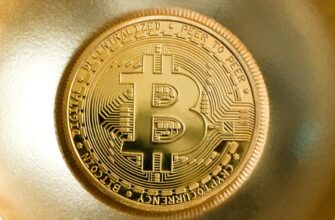What Are P2P USDT Rates?
P2P USDT rates refer to the exchange prices users pay when buying or selling Tether (USDT) through peer-to-peer platforms. Unlike centralized exchanges with fixed rates, P2P platforms allow individuals to set their own prices, creating a dynamic marketplace where rates fluctuate based on supply, demand, and negotiation. USDT, a stablecoin pegged 1:1 to the US dollar, maintains price stability in volatile crypto markets, making P2P rates crucial for traders seeking optimal value.
Why P2P USDT Rates Vary Dramatically
P2P USDT rates differ significantly across platforms and regions due to several key factors:
- Supply/Demand Imbalances: High buyer demand in regions with limited banking access drives rates above dollar parity, while seller saturation can push rates below $1.
- Payment Method Premiums: Sellers adjust rates based on transaction risk. Bank transfers often have the lowest premiums (0.5-2%), while riskier methods like PayPal may carry 5-10% markups.
- Geographical Arbitrage: Countries with currency devaluation (e.g., Nigeria, Turkey) see rates 3-8% higher than dollar parity as locals seek dollar-backed assets.
- Platform Fees: Marketplaces like Binance P2P or Paxful charge 0.1-1% fees, often baked into seller rates.
Key Factors Influencing Rate Fluctuations
Understanding these elements helps predict rate movements:
- Market Volatility Spikes: During Bitcoin rallies, USDT demand surges, temporarily lifting P2P rates by 2-4%.
- Regulatory Shocks: Government crackdowns (e.g., Nigeria’s 2021 ban) can cause localized rate spikes of 10-15% overnight.
- Liquidity Cycles: Rates dip during Asian trading hours when seller activity peaks, rising during European/American hours.
- Counterparty Risk: Top-rated sellers charge 0.5-1.5% premiums for trusted transactions.
How to Find Optimal P2P USDT Rates: 5-Step Strategy
Maximize value with these tactics:
- Multi-Platform Comparison: Cross-check rates on Binance P2P, Paxful, and LocalBitcoins simultaneously.
- Filter by Payment Method: Prioritize low-risk options like bank transfers for minimal premiums.
- Leverage Bulk Discounts: Sellers often offer 0.3-0.8% better rates for $1,000+ trades.
- Timing Optimization: Trade during high-liquidity periods (08:00-12:00 UTC) when rates dip.
- Reputation First: Choose sellers with 98%+ ratings and 100+ completed trades.
Mitigating P2P Trading Risks
While P2P offers better rates, these safeguards are essential:
- Escrow Scams: Never release funds before payment confirmation. Use platform escrow exclusively.
- Payment Reversals: Avoid reversible methods (e.g., PayPal Goods & Services). Document all transactions.
- Rate Manipulation: Beware sellers offering unrealistic rates (e.g., 20% below market) – likely fraud.
- Regulatory Compliance: Verify local crypto laws. Use KYC-verified platforms for dispute resolution.
P2P USDT Rate FAQ
Q: Why are P2P USDT rates higher than exchanges?
A: Sellers add premiums for transaction risk, platform fees, and regional demand – sometimes exceeding exchange rates by 3-7%.
Q: Can I get USDT below $1 via P2P?
A: Yes! During seller surpluses or in stable economies, rates often dip to $0.97-$0.99.
Q: Which payment methods offer the best rates?
A: Bank transfers typically have the lowest premiums (0.5-1.5%), followed by mobile money. Avoid gift cards and PayPal.
Q: How fast do P2P USDT trades complete?
A: Transactions finalize in 15-90 minutes after payment verification, depending on method and platform.
Q: Are P2P rates legal?
A: Yes, but regulations vary. Platforms like Binance P2P comply with local laws through KYC verification.
Q: How often do rates change?
A: Continuously – refresh platform listings every 10-15 minutes for real-time data during volatile periods.








